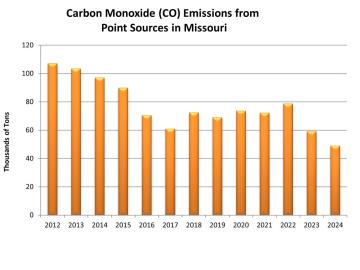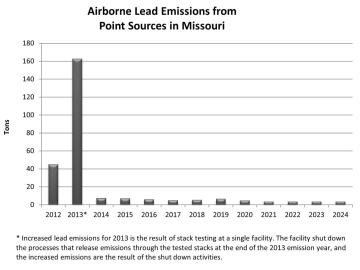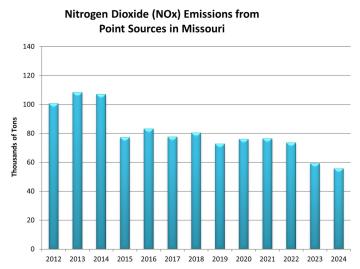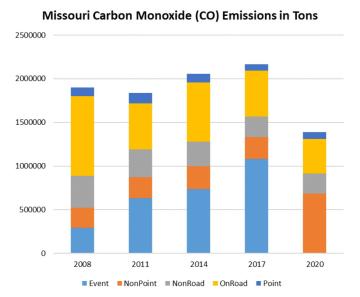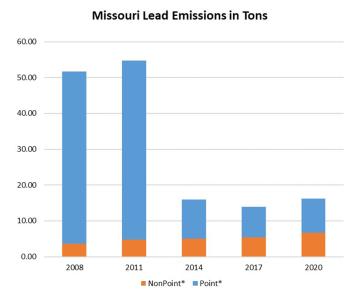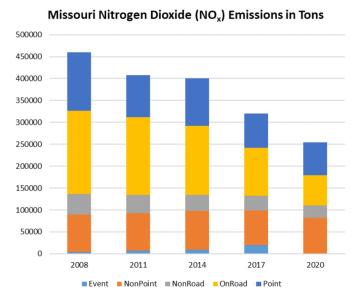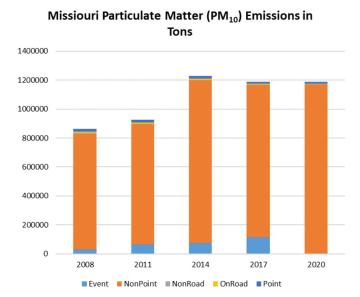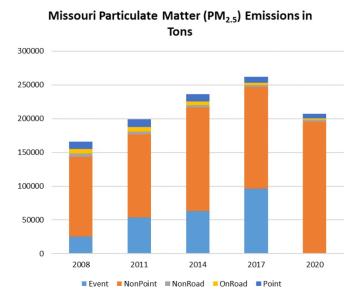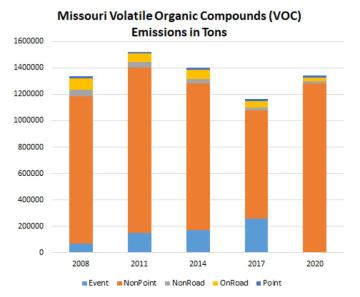Since the passage of the smoke ordinance in St. Louis City in 1937 Missouri has been working to improve air quality over the decades. Today, most areas of Missouri meet the federal Ambient Air Quality Standards with the exception of the ozone standard in some areas of the St. Louis metropolitan area and a few other localized areas for lead and sulfur dioxide.
The state develops a plan to address emissions that contribute to poor air quality when an area does not meet air quality standards. The long-term trends in emissions and air pollutants continue to decrease thanks to planning efforts as well as support from industry and citizens to reduce emissions.
Tracking the amount of pollutant emissions by regulated facilities is one way Missouri monitors improvements in air quality. The following charts track some emissions reported by large point sources such as power plants and industrial sources.
Point Sources Emissions Reported by Regulated Facilities
Click a chart/ image to enlarge.
Emissions from power plants and industrial sources are only part of the story. Another category of the emissions inventory includes mobile sources such as cars and trucks and nonpoint sources like residential and light commercial fuel combustion. In urban areas, the total emissions from the mobile sources is greater than point sources for some pollutants. Additional emissions reduction strategies for these areas may become necessary.
The following charts group the total statewide emissions inventory into the various emissions categories. This inventory is called the national emissions inventory and is produced on a three year cycle due to the effort needed to compile the emissions data estimates from all source categories. For 2020, the event emissions are now included in the nonpoint category.
National Emissions Inventory from All Sources
The charts below are updated every three years, after EPA releases the final version for the National Emissions Inventory.
Click a chart/ image to enlarge.

